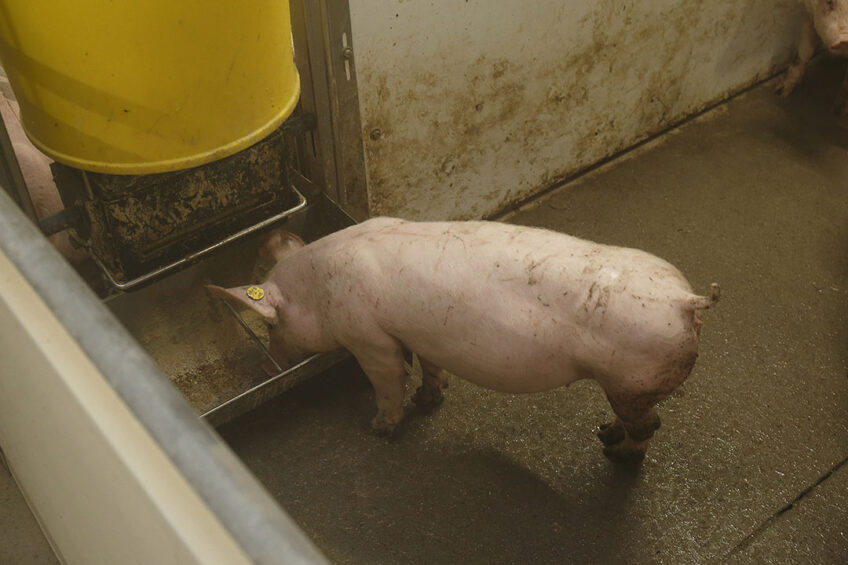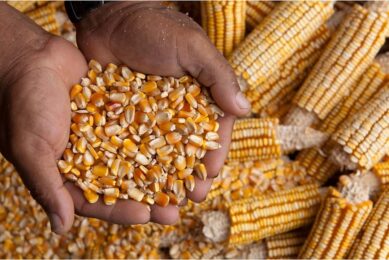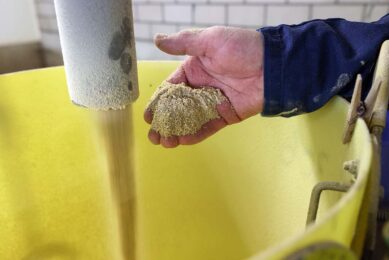New feed product for pigs sees higher feed conversion ratio

A feed product for pigs, poultry and aquaculture species called MrFeed Pro50 Sw is “an effective alternative protein source in swine nursery diets,” says Dr. Jon Holt, Assistant Professor and Extension Swine Specialist at North Carolina State University (NCSU).
MrFeed and other products made by Menon Renewable Products of California are produced through a patented process which sees the hydrocarbons in various starter materials converted into proteins, fats, enzymes and a range of prebiotics. According to the company, all products have been validated externally through federal government and state-sponsored studies.
Higher feed conversion ratio
Holt and his colleagues evaluated MrFeed Pro50 Sw in nursery pig diets at NCSU in 2021. Groups of weaned piglets were given diets in 3 phases containing either 0, 5, 10 or 15% of the product or a commercial control diet containing antibiotics (carbadox). The pigs were then put in a finishing trial for about 16 weeks. Pigs that were fed diets with MrFeed in the nursery trial were maintained on a diet of the product at 2.75%. Pigs that received no MrFeed in the nursery trial continued to receive none. None of the finishing diets contained antibiotics or other growth-promoting ingredients.
Overall, the finishing pigs fed MrFeed showed a feed conversion ratio (FCR) 4.5% higher than the control diet, and a slightly better mortality rate.
Holt notes that although there was no economic benefit to adding the product in finishing diets, “as more of the product is produced…the economics of its use will definitely improve.”
Commercial trial
A commercial-scale nursery trial was also undertaken with about 1,700 weaned pigs. 2 feed treatments were offered (Control or MrFeed Pro50 Sw at 5%) in 5 phases over 8 weeks. In Phase 1, MrFeed replaced all fishmeal, in Phase 2 MrFeed replaced other alternative proteins and no diets contained fishmeal. In Phase 3 and 4, MrFeed only replaced soybean meal and crystalline amino acids, as there were no alternative proteins added to these diets. During Phase 5 all pigs were fed a common diet.
The inclusion of MrFeed at 5% in the nursery diet Phases 1 and 2 showed no difference in performance and indicated it may be a suitable replacement to other specialty proteins typically included in nursery pig diets. Adding MrFeed at 5% in nursery Phases 3 and 4 provided a statistically significant advantage to growth and FCR, but did increase costs. There were no carryover effects of feeding MrFeed in earlier nursery phases as evidence by similar growth reported in Phase 5 when pigs were fed a common diet.
As mentioned, this product contains prebiotics, and Holt says that further work may help discover how the product might improve health.
Sustainability benefits
Because MrFeed “can be produced from by-products that are otherwise not fed to monogastrics or just thrown away as waste,” says Holt, “the real benefit of the product is sustainability.”
Indeed, in some areas of the world, soybean meal imported from Brazil is a common protein source for pigs. Rainforest in Brazil continues to be removed to plant soybeans.
Cellulosic feedstocks
The process used to make MrFeed can, according to the company, be applied to over 1000 cellulosic feedstocks, which begins with breakdown of these feedstocks into sugars.
However, to get the process going, optimum levels of hydrocarbon sugars are needed. Untreated feedstocks do not yield much of these sugars, so feedstocks are therefore pre-treated using simultaneous saccharification and fermentation.
 Beheer
Beheer








 WP Admin
WP Admin  Bewerk bericht
Bewerk bericht